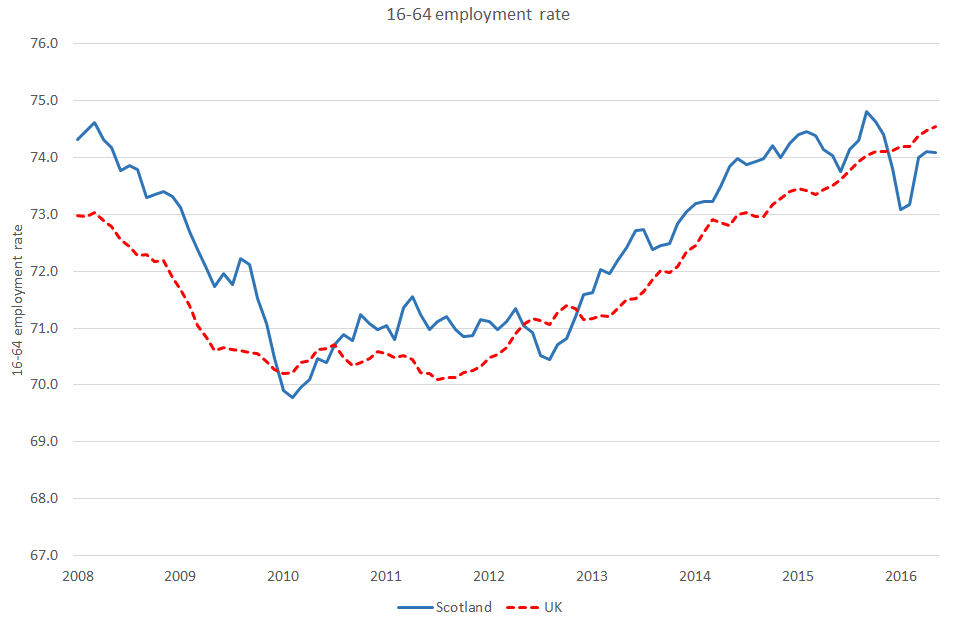David Eiser, Stuart McIntyre and Andrew Ross,
Media headlines will focus on the fact that today’s labour market data show that the unemployment rate in Scotland is now lower than at any point since 2008, and is lower than in the UK as a whole (4.7%, compared to 4.9% in the UK).
Looking beneath the headline unemployment numbers however, not all is entirely positive.
Whilst unemployment is lower in Scotland than in the UK as a whole, this is largely because inactivity rates are higher. (The inactive include those who are not in work and not available for work; reasons for being economically inactive can include being in full-time education, caring for others, having retired, being long-term sick, and so on). Scotland’s 16-64 economic inactivity rate, having been below that of the UK throughout most of 2013, 2014 and 2015, is now above that of the UK (22.1% v. 21.5%).

Consequently, the 16-64 employment rate in Scotland, whilst reasonably high by historical standards at 74.1%, is slightly below that in the UK as a whole (74.5%). This is equivalent to a jobs gap of around 14,000.
In fact whilst the employment rate in the UK has continued an upward trend during the past 12 months, the Scottish employment rate has now only just recovered its rate of 12 months ago, having declined substantially during the second half of 2015 (see chart).
Compared to the same period last year, there has been no increase in the number of those aged 16-64 in employment in Scotland. Whilst there are 33,000 fewer 16-64 year olds who are unemployed, there are also 30,000 fewer economically active (and 3,000 fewer people aged 16-64 in total).
It would appear that, when the employment rate in Scotland declined substantially during the second half of 2015, many of those moving out of employment became economically inactive, rather than remaining part of the economically active population. As the employment rate has recovered, the unemployment rate has fallen, but the economically inactive rate is yet to do so.
We await more detailed information on labour market flows and status to be able to shed more light on the reasons for these trends (today’s release includes only headline figures).
In summary therefore, today’s labour market statistics should be seen in the round.
Compared to the UK, Scotland has a slightly lower proportion of working age individuals who are unemployed (i.e. not in work but seeking and available for work), but a slightly higher proportion of people who are inactive (i.e. not in work and not available for work). Scotland’s employment rate remains slightly below the UK’s.
Authors
The Fraser of Allander Institute (FAI) is a leading economy research institute based in the Department of Economics at the University of Strathclyde, Glasgow.
